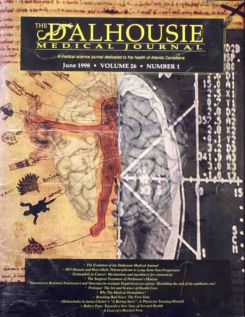Why the Medical Humanities?
DOI:
https://doi.org/10.15273/dmj.Vol26No1.4424Abstract
In the Gilman Lecture to Johns Hopkins Medical School in November 18, 1984, Canadian novelist Robertson Davies called his talk “Can a Doctor be a Humanist”, but said the title should be, “Can a Doctor Possibly Be a Humanist in a Society that Increasingly Tempts Him to be a Scientist?” He spoke of the cadeuces, that symbol with the two serpents entwined on the staff, one Knowledge and one Wisdom. The legend said that the warring serpents were writhing on the ground but were pacified by Hermes who passed a staff between them. Davies said Knowledge and Wisdom aren't necessarily opponents, but they are opposites, and they must be reconciled and made supporters of each other. For the physician, Knowledge comes from without, and from education and study, enabling him to help patients. Wisdom, on the other hand, is an introverted element of the doctor's psyche, coming from within...
"and it is what makes him look not at the disease, but at the bearer of the disease. It is what creates the link that unites the healer with his patient, and the exercise of which makes him a true physician, a true healer, a true child of Hermes. It is Wisdom that tells the physician how to make the patient a partner in his own cure. Instead of calling them Knowledge and Wisdom, let us call them Science and Humanism." (1)
Downloads
How to Cite
Issue
Section
License
Authors who publish with this journal agree to the following terms:
- Authors retain copyright and grant the journal right of first publication with the work simultaneously licensed under a Creative Commons Attribution License that allows others to share the work with an acknowledgement of the work's authorship and initial publication in this journal.
- Authors are able to enter into separate, additional contractual arrangements for the non-exclusive distribution of the journal's published version of the work (e.g., post it to an institutional repository or publish it in a book), with an acknowledgement of its initial publication in this journal.
- Authors are permitted and encouraged to post their work online (e.g., in institutional repositories or on their website) prior to and during the submission process, as it can lead to productive exchanges, as well as earlier and greater citation of published work (See The Effect of Open Access).


